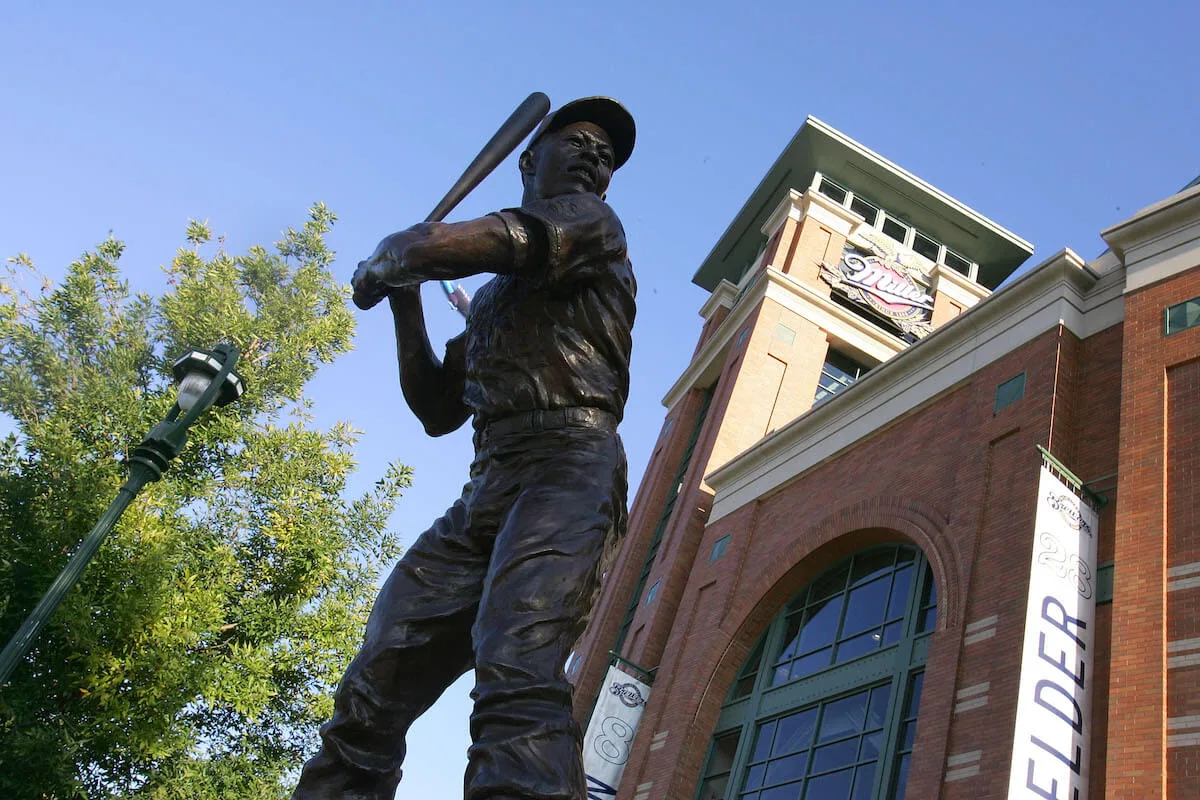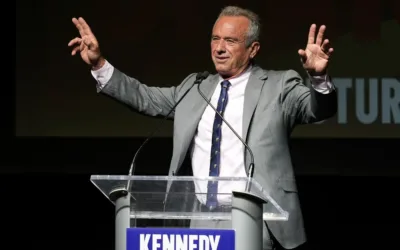
#image_title
Legendary slugger who played in Eau Claire prior to Milwaukee and Atlanta died Friday at 86.
Hank Aaron, who endured racist threats with stoic dignity during his pursuit of Babe Ruth’s home run record and gracefully left his mark as one of baseball’s greatest all-around players, died Friday. Forever claimed by Wisconsin for having begun his minor league career in Eau Claire and his major league career in Milwaukee, Aaron was 86.
The Atlanta Braves, Aaron’s longtime team, said he died peacefully in his sleep. No cause was given.
“Hammerin’ Hank” set a wide array of career hitting records during a 23-year career spent mostly with the Milwaukee and Atlanta Braves, including RBIs, extra-base hits and total bases. But the Hall of Famer will be remembered for one swing above all others, the one on April 8, 1974 that made him baseball’s home-run king. Before a sellout crowd at Atlanta Stadium and a national television audience, Aaron broke Ruth’s home run record with No. 715 off Al Downing of the Los Angeles Dodgers. The Major League Baseball Hall of Famer finished his career with 755.

Signed in 1952 by the then-Boston Braves—who would shortly move to Milwaukee—Aaron got his MLB start in the minor leagues in western Wisconsin, where he spent that summer playing for the Eau Claire Bears. Earlier, he had played for a few months in Indianapolis with the Negro League team there.
When Aaron arrived in Eau Claire with only a suitcase and a small room to live in at the city’s YMCA, he was a shy, unknown 18-year-old Black man from Alabama arriving in a nearly all-white community in a part of the country he had never been to, not knowing what kind of reception he would receive.
While there were uncomfortable moments initially, Aaron received little in the way of overt racism during his time in Eau Claire, according to the book “A Summer Up North: Henry Aaron and the Legend of Eau Claire Baseball” authored by Jerry Poling, a lifelong Eau Claire resident and longtime columnist and editor at the city’s Leader-Telegram newspaper who now works at UW-Stout.
“That summer was difficult initially,” Poling said Aaron told him. “But once he settled in, he said people in Eau Claire accepted him for who he was.”
In fact, Poling said, the soft-spoken Aaron credited his few months in Eau Claire for helping provide him with the confidence to continue what would become a legendary career.
“If he hadn’t had Eau Claire, we might not have had the Henry Aaron we know today,” Poling said.
Poling credited Aaron with helping break down the color barrier in Major League Baseball. Black players and others of color experienced significant racism in the years after Jackie Robinson became the league’s first Black player in 1947. After his retirement as a baseball player in 1976, Aaron got involved with causes to continue the civil rights fight.
Poling got to know Aaron after meeting him in August 1994, after writing a column in the Leader-Telegram saying the city should commemorate Aaron’s time playing baseball in the city in some way. That column prompted city officials and others to do so. Former UW-Eau Claire art professor Ken Campbell saw the column and created a statue of Aaron, and money was raised for the endeavor.
Aaron returned to Eau Claire for a dedication ceremony, and Poling spent the day with him. Aaron didn’t seem to know what to expect, Poling said, but when they entered Carson Park and began to drive toward the stadium, it quickly became evident a large audience was gathered to celebrate the baseball icon. Vehicle after vehicle lined the road leading to the ceremony site at the stadium’s entrance, evidence of a crowd gathered there estimated at about 5,000.
“He looked at me and said ‘You’ve got quite a crowd here,’” Poling recalled. “It wasn’t just a committee and a few people holding a ceremony. It was a community gathered to celebrate him. He really appreciated the fact that Eau Claire came out to support him.”

In ensuing years Poling sometimes heard Aaron reference Eau Claire when he conducted interviews during Milwaukee Brewers game broadcasts or on other occasions. He and Aaron kept in touch. Two years ago, just before Aaron’s birthday, Poling emailed Aaron with happy birthday wishes. Aaron responded, noting his appreciation of Poling and Eau Claire.
“He was a thoughtful, introspective man,” Poling recalled of Aaron. “He was a real gentleman. He was an amazing baseball player, and he was more than that. Eau Claire was the start of his amazing career.”

Aaron spent 21 of his 23 seasons with the Braves, first in Milwaukee, then in Atlanta after the franchise moved to the Deep South in 1966. He finished his career back in Milwaukee, traded to the Brewers after the 1974 season when he refused to take a front-office job that would have required a big pay cut.
His 755 home run record was surpassed by Barry Bonds in 2007—though many continued to call the Hammer the true home run king because of allegations that Bonds used performance-enhancing drugs. Bonds finished his tarnished career with 762.
Aaron’s career numbers largely stood the test of time. He still has more RBIs (2,297), extra-base hits (1,477) and total bases (6,856) than anyone in baseball history. He ranks second in at-bats (12,354), third in games played (3,298) and hits (3,771), fourth in runs scored (tied with Ruth at 2,174) and 13th in doubles (624).
Aaron made his last public appearance just 2 1/2 weeks ago, when he received the COVID-19 vaccine. He said he wanted to help spread the message to Black Americans that the vaccine was safe.
“I don’t have any qualms about it at all, you know. I feel quite proud of myself for doing something like this,” he said. “It’s just a small thing that can help zillions of people in this country.”
The Associated Press contributed to this story.

New Biden rules deliver automatic cash refunds for canceled flights, ban surprise fees
In the aftermath of a canceled or delayed flight, there’s nothing less appealing than spending hours on the phone waiting to speak with an airline...

One year on the Wienermobile: The life of a Wisconsin hotdogger
20,000+ miles. 16 states. 40+ cities. 12 months. Hotdogger Samantha Benish has been hard at work since graduating from the University of...

Biden makes 4 million more workers eligible for overtime pay
The Biden administration announced a new rule Tuesday to expand overtime pay for around 4 million lower-paid salaried employees nationwide. The...

‘Radical’ Republican proposals threaten bipartisan farm bill, USDA Secretary says
In an appearance before the North American Agricultural Journalists last week, United States Department of Agriculture (USDA) Secretary Tom Vilsack...




